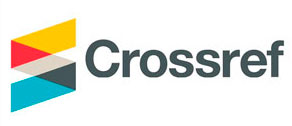Pengaruh Struktur Modal Terhadap Profitabilitas pada Perusahaan Manufaktur yang Terdaftar di BEI Periode 2011-2013
Abstract
In order to meet the needs of the funds used to operate and develop the business, the company must be able to obtain or provide the required capital in a way that is effective and efficient, whether the capital come from internal or external. It is a matter of financial structure and capital structure which is used to measure the profitability of a company. The purpose of this study is to determine empirically the effect of capital structure variables that proxy with Debt Equity Ratio and Times Interest Earned on profitability variable proxied by Return On Equity. The data used in this study were obtained from the annual financial statements of each manufacturing company published through the official website www.idx.co.id. Samples are taken as many as 41 companies listed in Indonesia Stock Exchange during the period from 2011 to 2013 were taken through purposive sampling method. Data analysis techniques in this study using multiple regression analysis. The results showed that in partial Debt Equity Ratio with regression value of 0.048 and a significant positive effect on the variable Return On Equity, while variable for 0,010 Times Interest Earned positive but not significant effect on the variable Return On Equity. This suggests that the use of debt and capital as well as the ability of the company to pay a fixed load of interest being the size of the company to obtain additional funds so as to improve profitability.
Keywords
Full Text:
PDFReferences
Andrew, D. Joseph. 2004. Financial Management Principles & Practice. Third Edition. Prentice Hall.
Apriani, Aurin. 2001. Analisis Pengaruh Struktur Modal Terhadap Kinerja Keuangan. Jurnal. Universitas Padjajaran. Bandung. Hal: 9-15
Riyanto, Bambang. 2001. Dasar-dasar Pembelanjaan Perusahaan. BPFE. Yogyakarta.
Brigham Eugene F dan L.C Gapenski. 1993. Intermediate Financial Management. Fourth , Fort Word, The Dyrden Press. Harcourt Brace College Publisher.
Bringham, Eugene F, dan L.C. Gapenski, 1997, Financial Management, Theori and Prastice. Eight Edition. The Dryden Press. USA.
Brigham, Eugene F and Joel F.Houston, 2006. Dasar-Dasar Manajemen Keuangan. Alih bahasa Ali Akbar Yulianto. Buku satu, Edisi sepuluh. Salemba Empat. Jakarta.
Damodaran, A. 1997. Corporate Finance Theory and practice. John Willey & Sons, Inc. Newyork.
Ferdinand, A.T. 2006. Metode Penelitian Manajemen. BP Undip. Semarang.
Ghozali, Imam. 2009. Aplikasi Analisis Multivariat dengan Program SPSS. Edisi Keempat. Badan Penerbit Universitas Diponegoro. Semarang.
Gill, et. al., 2011 . Analysis of Firm Size, Sales Growth, and Total Asset Turnover To Return On Equity. Saur, Munchen.
Harmono. 2011. Manajemen Keuangan. PT. Bumi Aksara. Jakarta.
Irawati, Susan. 2006. Manajemen Keuangan. Pustaka. Bandung.
J. Hartono. 2000. Teori Portofolio Dan Analisis Investasi. Penerbit BPFE. Yogyakarta.
Myers, S. C. 1997. The Capital Structure Puzzle. Journal of Finance 39. Hal: 572-592.
Myers, S. C. 2001. Fundamentals of corporate finance. Prentice Hall, inc. New Jersey.
S, Munawir. 2004. Analisis Laporan Keuangan. Edisi Ke-4. Liberty. Yogyakarta.
Rusdy H., Rahman. 2014. Pengaruh Struktur Modal Terhadap Nilai Perusahaan Dengan Profitabilitas Sebagai Variabel Intervening Pada Perusahaan Properti Dan Real Estate Di BEI. Skripsi. Universitas Udayana. Denpasar.
Samir. 2010. Pengaruh Financial Leverage Terhadap Return on Equity pada Perusahaan sektor Pertanian di BEI periode 2009-2012. Skripsi. Fakultas Ekonomi. Universitas Diponegoro. Semarang.
Sartono, Agus. 1999. Faktor-faktor Yang Mempengaruhi Struktur Modal Perusahaan Manufaktur di Bursa Efek Jakarta Periode 1994-1997. Vol: 14, No. 4, Hal: 124-136.
Sawir, Agnes. 2005. Analisis Kinerja Keuangan dan Perencanaan Keuangan Perusahaan. Gramedia Pustaka Utama. Jakarta.
Sugiyono. 2007. Metode Penelitian Kuantitatif dan Kualitatif. CV. Alfabeta. Bandung.
Sugiyono. 2009. Metode Penelitian Bisnis (Pendekatan Kuantitatif, Kualitatif, dan R&D). Alfabeta. Bandung.
Sumarsono. 1999. Pengaruh Tingkat Rentabilitas Terhadap Modal Sendiri Pada Perusahaan Industri Tekstil, Garmen Di BEI Yang Sudah Go Public Periode 1993-1997. http://digilib.ti.itb.ac.id.
Supranto. 2001. Statistik Teori dan Aplikasi. Erlangga. Jakarta.
Sutrisno. 2009. Manajemen Keuangan: Teori, Konsep dan Aplikasi. Ekonisia. Yogyakarta.
Tambun. 2007. Menilai Harga Wajar Saham. PT. Gramedia Pustaka Umum. Jakarta.
Velnampy, T. dan J.A. Niresh. 2012. The Relationship between Capital Structure & Profitability. Global Journal of Management and Business Research. 12(13): 66-74.
Walsh, Ciaran. 2004. Key Management : Rasio-Rasio Manajemen Penting Penggerak dan Pengendali Bisnis, Edisi Tiga. Erlangga. Jakarta.
Weston, J. F. dan Brigham. 1994. Dasar Managemen Keuangan. Erlangga. Jakarta.
Weston, J. Fred dan Thomas E. Copeland. 1996. Manajemen Keuangan. Erlangga. Jakarta.
Yuliningrum, Dwi, Ratih. 2008. Pengaruh Faktor Profitabilitas, Struktur Asset, dan Kebijakan Dividen terhadap Struktur Pendanaan pada Perusahaan Manufaktur di Bursa Efek Indonesia. Skripsi. Fakultas Ekonomi. Universitas Sumatera Utara. Medan.
Website Resmi :
www.idx.co.id
www.google.com
www.kompas.com
Haninun, Angelina. Feby. 2016. Pengaruh Struktur Modal Terhadap Profitabilitas pada Perusahaan Manufaktur yang Terdaftar di BEI Periode 2011-2013. Universitas Bandar Lampung.
DOI: http://dx.doi.org/10.36448/jak.v7i1.631











